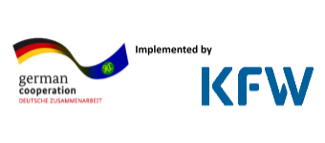About Kaza
About Kaza
The journey towards the establishment KAZA TFCA began in 2006 with the signing of a Memorandum of Understanding (MoU), culminating in the formal establishment of KAZA TFCA through a treaty signed by the Heads of State of all five participating countries in Luanda, Angola in August 2011. In a testament to the enduring success of this collaboration, the Partner States reaffirmed their commitment to KAZA’s vision and mission at the 2024 KAZA Heads of State and Government Summit.
KAZA TFCA at a glance:
ANGOLA
- Key Contribution: Vast wilderness areas like Luengue-Luiana National Park, surrounded by vital rivers including the Cubango and Cuito.
- Protected Areas found within the region: Luiana and Mavinga National Parks.
- Hunting Areas: Luengue, Luiana, and Mucusso Hunting Areas.

BOTSWANA
- Key Contribution: Home to the Okavango Delta, a UNESCO World Heritage Site, and Chobe National Park, which hosts the largest population of African elephants.
- Protected areas found within the region: Okavango Delta (including Moremi Game Reserve), the Chobe-Linyanti river system (including Chobe National Park) and Makgadikgadi-Nxai National Park.

NAMIBIA
- Key Contribution: The Zambezi Region, Bwabwata National Park, and critical migration corridors for elephants and other wildlife.
- Protected areas found within the region: Bwabwata National Park, Mudumu National Park, Nkasa Rupara National Park, Khaudum National Park, Mangetti National Park, Caprivi State Forest and conservancies and community forests between and around these Protected Areas.

ZAMBIA
-
Key Contribution: Victoria Falls and Kafue National Park
-
Protected areas found within the region: Kafue National Park, Sioma-Ngwezi National Park, Mosi-oa-Tunya National Park, and their adjoining game management areas, forest reserves, and open areas of Kalomo, Kazungula and Sesheke Districts.

ZIMBABWE
- Key Contribution: Hwange National Park and Lake Kariba, both rich in biodiversity and critical to transboundary animal migration.
- Protected areas found within the region: Hwange National Park, Zambezi National Park, Victoria Falls National Park, Kazuma Pan National Park, Chizarira National Park, Matusadona National Park, Matetsi, Deka, Chete, Chirisa and Charara Safari Areas, including, Bembesi, Fuller, Gwayi, Kazuma, Mzola, Ngamo, Panda Masuwe, Sijarira and Sikumi Forests incorporating Hwange, Tsholotsho, Bulilima, Binga, Gokwe, Nyaminyami and Hurungwe Communal Lands, as well as privately held State Land and conservancies extending eastwards to Lake Kariba Recreational Park and Kariba Town

KAZA TFCA UNIVISA
The KAZA TFCA UNIVISA was initiated in 2016 as a 30-day visa to facilitate easy movement of tourists within the KAZA TFCA landscape. The UNIVISA is currently obtainable in Zambia and Zimbabwe, with a limited 24-hour trip into Chobe National Park in Botswana
There have since been consultations aimed at implementing the UNIVISA across Angola, Botswana, and Namibia – and even beyond. In the next phase, it is anticipated that the three Partner States will join the effort.
On arrival at any international entry point within KAZA TFCA, please do enquire whether that country is offering the UNIVISA www.kavangozambezi.org

